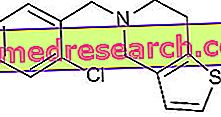Related articles: Uterine fibroids
Definition
Uterine fibroids are benign tumors, very common in women of childbearing age, originating from the muscle tissue of the uterus. These neoformations appear as solid, spherical or poly-lobulated masses. Uterine fibroids can be single or multiple and develop towards the uterine cavity, in the thickness of the muscular wall of the uterus (myometrium) or grow outward (perimeter and pelvic spaces). Sometimes they can even be pedunculated. The size of the fibroids is very variable (from a few millimeters to several centimeters) and, given that they possess receptors for estrogens, they tend to increase during the course of reproductive life and to regress spontaneously after menopause.
The underlying causes of the development of fibroids are not fully understood, however genetic predisposition and a particular susceptibility to hormonal stimulation seem to play a role.
Most common symptoms and signs *
- Miscarriage
- Changes in the menstrual cycle
- Anemia
- Dismennorea
- Dysuria
- Ovarian pain
- Pelvic pain
- Postpartum hemorrhage
- Abdominal swelling
- infertility
- Iridodonesi
- Abdominal mass
- Menometroraggia
- Menorrhagia
- Metrorrhagia
- nocturia
- polymenorrhea
- pollakiuria
- Rupture of the uterus
- Vaginal bleeding
- Constipation
- Strangury
- Retrospective Uterus
Further indications
The appearance of symptoms depends on the position, size and number of fibroids.
Although in many cases they are asymptomatic and small, these neoformations can be responsible for abnormal vaginal bleeding, heavy menstruation or more frequent cycles, pelvic pain, urinary and intestinal disorders. Sometimes, uterine fibroids can make it difficult to conceive or carry a pregnancy to term.
Diagnosis is made using the pelvic exam combined with transvaginal ultrasound. It is not uncommon for fibroids to be discovered by chance during a routine gynecological examination.
If the fibroids are asymptomatic, periodic monitoring of the fibroids can be scheduled with the specialist. In the presence of symptoms, on the other hand, therapeutic approaches may be different and may include the use of oral contraceptives and the use of analogous drugs of GnRH (gonadotropin-releasing hormone). These drug therapies act on the symptoms and reduce the fibroid, but do not completely regress it.
In other cases, the treatment involves the definitive removal of the fibroids using different surgical techniques (eg hysterectomy, myomectomy and endometrial ablation).



